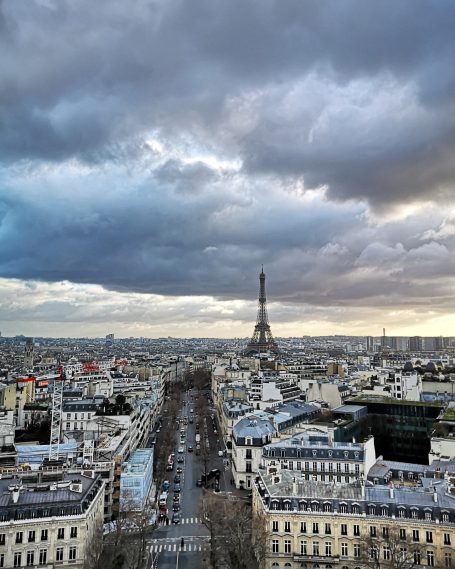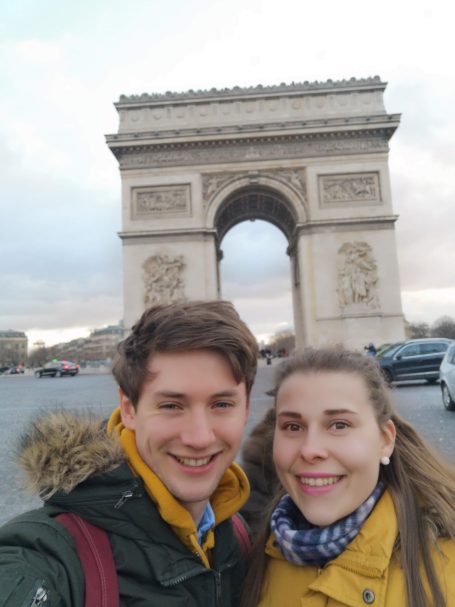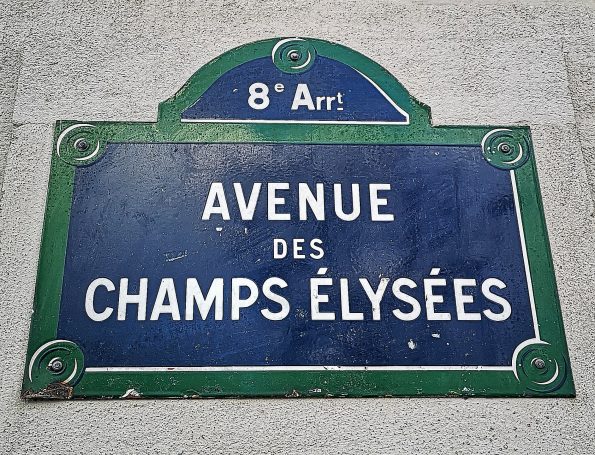Travel Tips: Champs-Élysées & Arc de Triomphe, Paris
No visit to Paris is complete without experiencing the grandeur of the Champs-Élysées and the majestic Arc de Triomphe. This legendary avenue, culminating in a monument offering breathtaking city vistas, is a testament to Parisian history and elegance.
Drawing from my extensive experience exploring Paris and these two iconic landmarks, the following tips are tailored to enhance your visit to the Champs-Élysées and Arc de Triomphe. Let me guide you through these highlights for an unforgettable Parisian experience.
Champs-Élysées
Best Time to Window Shop
- Morning (before 11:00AM): Offers a more relaxed atmosphere with fewer crowds, ideal for appreciating the architecture and window displays.
- Evening (after sunset): The avenue twinkles with lights, creating a romantic ambience perfect for a leisurely walk. Be prepared for more people.
- Midday & Weekends: These times tend to be the busiest.
Walk the Walk
The Champs-Élysées is best experienced on foot. Allow ample time to stroll the 1.9 kilometres (1.2 miles) between Place de la Concorde and the Arc de Triomphe. Wear comfortable shoes!
Café Culture
Take a break at one of the famous (though often pricier) cafés lining the avenue. Enjoy a coffee or pastry and soak in the Parisian atmosphere. You'll find a wealth of excellent cafés and restaurants just steps away from the main Champs-Élysées. I particularly recommend Café La Belle Ferronnière.
Plan Your Focus
Decide if you want to explore specific sections, perhaps focusing on the lower end near the gardens or the upper end leading to the Arc de Triomphe. There are several luggage storage services available nearby for a small fee, allowing you to explore this area hands-free. We've had positive experiences with Stasher & Bounce. This worked well for us, as we were staying in an AirBnB, which did not have luggage storage and it was our last day before our flight home.
Be Aware of Events
The Champs-Élysées frequently hosts parades, festivals, and national celebrations. Check the Parisian event calendar beforehand, as this can impact accessibility and crowd levels.
Safety First
Given the recent surge in pick-pocketing in popular tourist areas and on public transport across major cities, vigilance over your personal belongings is highly recommended.
Arc de Triomphe
History of Arc De triomphe
The Arc de Triomphe, a colossal triumphal arch in Paris, stands as an enduring symbol of French national pride and military glory. It was commissioned by Napoleon Bonaparte in 1806, following his victory at the Battle of Austerlitz, to honour the Grande Armée and commemorate France's military achievements.
Construction began that same year but was protracted, taking 30 years to complete, spanning various political regimes. The arch was finally inaugurated in 1836 under King Louis-Philippe. Designed by Jean Chalgrin, its architecture draws inspiration from classical Roman arches but on a monumental scale.
The Arc de Triomphe is adorned with magnificent relief sculptures depicting key moments and figures from the French Revolutionary and Napoleonic Wars, most notably "The Departure of the Volunteers of 1792" (La Marseillaise) by François Rude.
In 1921, the Tomb of the Unknown Soldier from World War I was interred beneath its arch, with an eternal flame lit in 1923, transforming the monument into a poignant memorial to all those who have died for France. It has since served as the focal point for many national celebrations and commemorations.
Access via Underground Passages
Crucially, do not attempt to cross the incredibly busy roundabout at street level. Clearly marked underground passages are located on the north and south sides of the Champs-Élysées and Avenue de la Grande Armée, providing safe access to the Arc.
Climbing to the Panoramic Terrace
- Prepare for Stairs: There is no elevator to the top. The ascent involves climbing approximately 280 steps via a spiral staircase. Please consider this when planning your visit, particularly if you have accessibility requirements. (Note: It can be tiring, but the reward is worth it!)
- Ticket Purchase: Purchase tickets on-site or, preferably, online in advance to save time and avoid potential queues, especially during peak season.
- Best Time for Views: Sunset offers spectacular panoramic views of Paris, including the Eiffel Tower sparkling on the hour (check the timing!). However, it's also a popular time. Consider visiting earlier in the day for fewer crowds.
View from the Panoramic Terrace
From the top, you'll enjoy breathtaking 360-degree views of Paris, including the Champs-Élysées stretching out below, the Louvre, the Eiffel Tower, Sacré-Cœur Basilica, and the city's intricate street layout. Informational panels help identify key landmarks. (The first (left) and third photos (right) above on this page showcase some of the views you can expect.)
Visit the Interior
Take time to see the interior of the Arc, including the Tomb of the Unknown Soldier from World War I and the flame of remembrance, which is rekindled every evening at 6:30 PM.
Allow Sufficient Time
Plan at least 2-4 hours to fully experience both the Champs-Élysées and a visit to the top of the Arc de Triomphe.
Photography Tips
Arc de Triomphe Building
When photographing the Arc de Triomphe itself, vary your angles by shooting straight up from the base to capture its scale and ceiling, or from the pedestrian underpass for unique perspectives. Utilise the Champs-Élysées as a leading line to frame the Arc from a distance, or capture the dynamic traffic from across the Étoile roundabout (safely, from a distance). Don't forget to capture the intricate details like its magnificent sculptures, historical reliefs, the eternal flame at the Tomb of the Unknown Soldier, and the engraved names on the inner walls. For the best lighting, aim for Golden Hour (sunrise/sunset) for warm light, Blue Hour for striking contrast, or night to capture its stunning illumination.
Panoramic Terrace (Views from the Top)
For breathtaking shots from the Arc de Triomphe terrace, utilise its unparalleled 360-degree views of Paris, capturing the Axe Historique stretching to the Louvre and La Défense. Frame iconic landmarks like the Eiffel Tower (especially during its nightly sparkle show), the bustling Champs-Élysées, and distant sights like Sacré-Cœur. Sunset and night offer magical city light photos, while an overcast day provides even lighting. To manage crowds, visit early or late, and be patient for clear shots. Equip yourself with a wide-angle lens for panoramas and a telephoto for distant landmarks, or simply use your smartphone's panorama mode. (Photo one & three at the top of the page (left & right) are the views that welcome you on the terrace).
Accessibility @ ARC DE TRIOMPHE
Visitors with disabilities receive priority and free access to the Arc de Triomphe, along with one companion, upon presenting a valid Mobility Inclusion Card (or equivalent foreign certificate) at the ticket office. Recipients of the Disabled Adult Allowance (AAH) also receive free entry, though their companion pays. Please note that while a CMI parking card grants priority access, it does not provide free parking. Access to the monument for those with reduced mobility is exclusively via a drop-off point on the Avenue de la Grande Armée side, using a taxi or private vehicle, as crossing Place Charles de Gaulle on foot is not possible.
For your comfort, the monument offers various tools available for loan in exchange for ID at the ticket office, including magnifying glasses, noise-cancelling headphones, and wheelchairs. Guide and assistance dogs are warmly welcomed. Additionally, two ticket office cash registers and one in-store cash register are equipped with magnetic induction loops (MILs). Staff wearing LSF (French Sign Language) badges are also available to assist.
For individual visits, no prior reservation is needed; simply present your valid proof at the ticket office for priority and free entry with your companion. Group visits (7 or more people) require reservations, with special offers available, including tours in French Sign Language. While the teaching room is not accessible for people with reduced mobility, various visiting assistance devices are provided, such as sound capsules for discovering artworks via QR code, FALC (easy-to-read) Visitor's Guides (downloadable or printed), and Braille or enlarged print booklets on the Arc's history, all available free of charge.
Combined Tips
- Combine Your Visit: It's natural to visit the Champs-Élysées and the Arc de Triomphe together as they are directly connected. The Arc de Triomphe is located at the end of the Champs-Élysées.
- Transportation: The area is well-served by several metro stations (Charles de Gaulle – Étoile for the Arc, and various stations along the Champs-Élysées like George V, Franklin D. Roosevelt, and Concorde). George V is the closest staion to the Arc de Triomphe.
- Nearby Attractions: Consider combining your visit with a stroll through the Tuileries Garden (at the Place de la Concorde end of the Champs-Élysées) or exploring the upscale shops and restaurants in the surrounding 8th Arrondissement.
- Budgeting: Be aware that prices for goods and services directly on the Champs-Élysées tend to be higher.
Last Updated: 3 June '25






